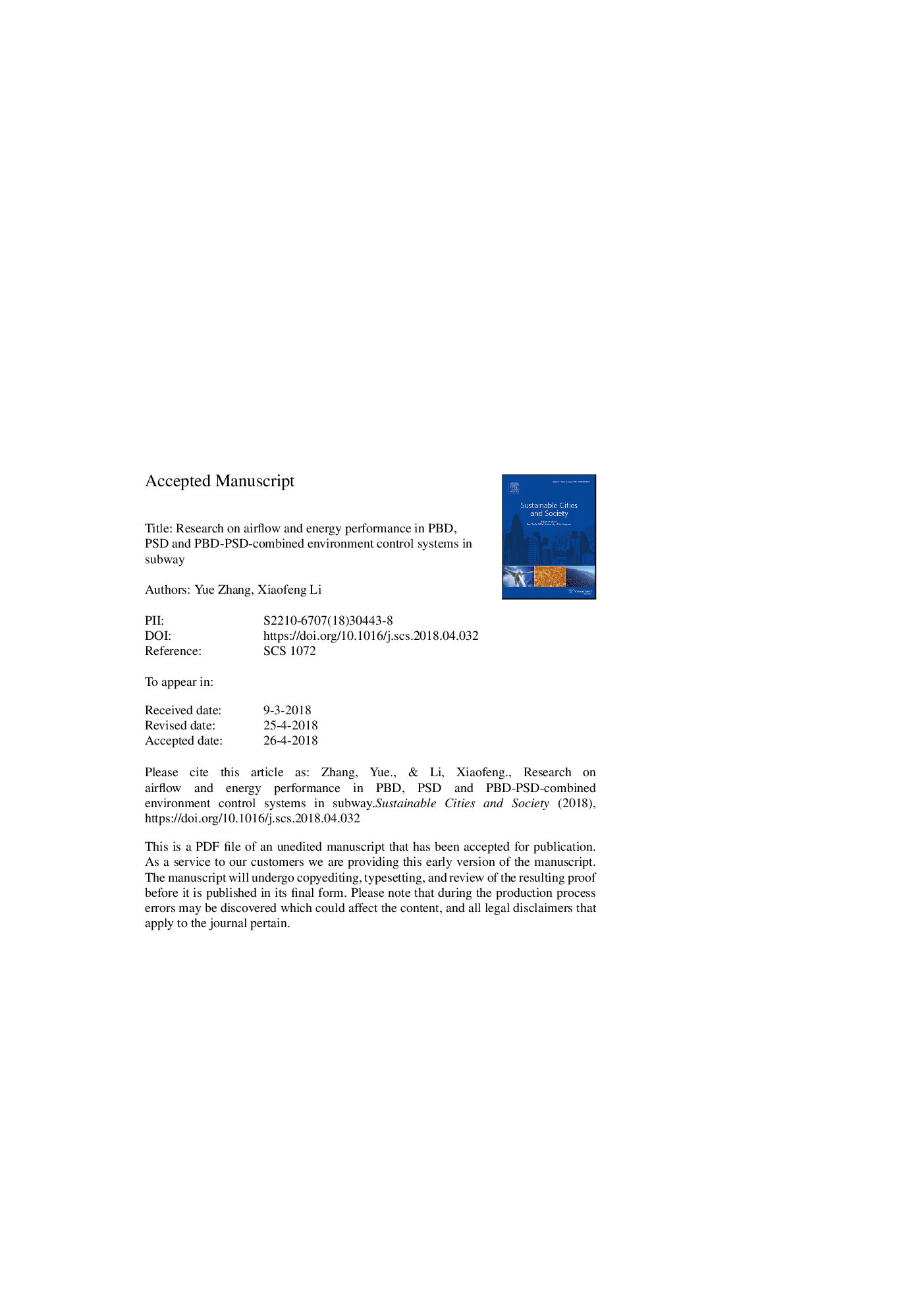| Article ID | Journal | Published Year | Pages | File Type |
|---|---|---|---|---|
| 11001290 | Sustainable Cities and Society | 2018 | 35 Pages |
Abstract
Environment control systems (ECSs) provides a comfortable environment for the passengers in subway stations, which are classified as platform bailout door (PBD), platform screen door (PSD) and PBD-PSD-combined systems. In this paper, the airflow characteristics and the energy consumption of these ECSs in typical subway stations were studied. Airflow was analyzed by a network simulation method, and the simulation results were verified by field tests. In addition, based on the cooling load calculation and the proposed operation strategy, the equipment opening time and the energy consumption of the three ECSs were analyzed in different climate zones with different operation phases. The results reveal that the PBD-PSD-combined system achieves the best energy performance among the three ECSs; however, the energy saving percentage varies in different situations. Compared to the sub-optimal ECS, the energy saving percentage of the combined system differs from 1% to 8%, while it is only 1% in hot climate zones with high passenger flow.
Related Topics
Physical Sciences and Engineering
Energy
Renewable Energy, Sustainability and the Environment
Authors
Yue Zhang, Xiaofeng Li,
